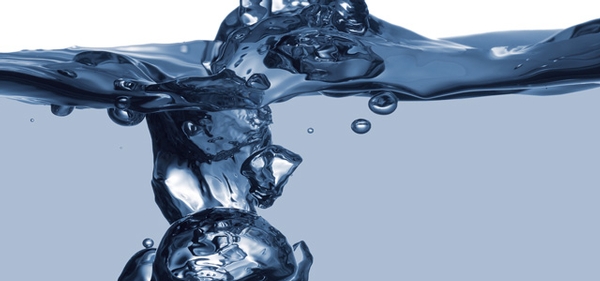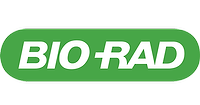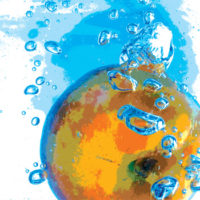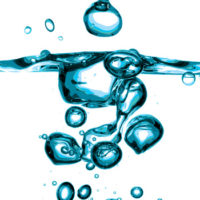Depending on gender, age and proportion of muscle-to-fat, the average human body is composed of approximately 50% to 70% water—the element that is essential for all life to exist. In a sense, then, we really are what we drink. For those of us who manufacture food and beverage products that contain water as an ingredient or that use water for production and other processes in the plant, we know that the quality and safety of this essential fluid has a significant impact on the quality of finished products. Just like our bodies, we know that our food products really are what we put into (or onto) them. Since water quality is so critical to the manufacuring of safe, wholesome foods, we must manage it effectively, from sourcing and receipt through production and packaging of product.
Water may be adulterated by a number of chemical, heavy metal, microbial and physical hazards that pose potential public health risks if they are present at high levels. Microbial hazards include waterborne pathogens such as E. coli, Salmonella and Listeria monocytogenes, Vibrio cholerae, and viruses and parasites, such as Hepatitis A virus, Giardia and Crytosporidium parvum. Chemical and heavy metal hazards in water range from the presence of lead, copper, methyl-tertiary-butyl-ether (MTBE), total trihalomethanes (TTHM), arsenic and benzene, to name a few. Physical hazards may include natural particulates, and glass and metal fragments. The potential for any one of these hazards to be present in a facility’s water supply requires food manufacturers to develop a solid water quality and safety management strategy.
From the processor’s perspective, water quality and safety begins at the source of the raw materials, and the key to good water safety and quality management is for all manufacturing facilities to have effective programs in place to control water microbiological, chemical and physical quality and to verify that the water meets specified requirements for both direct and indirect product uses. Developing a risk-based water monitoring program, or water safety plan, as part of the operation’s Hazard Analysis and Critical Control Points (HACCP) program is an excellent way to ensure that effective controls for water are achieved to prevent product exposure to spoilage or pathogenic microorganisms, to potential chemical contaminants and to possible physical hazards. Assessing and monitoring water quality and safety includes considering incoming water requirements, water utilities controls and treatments, and microbiological and chemical sampling and testing protocols that best meet your operation’s needs.
Incoming Water: Assessing the Supply Stream
The first step in developing a water safety plan is to establish basic requirements for incoming water. At minimum, the food processing plant’s potable water supply system must meet all applicable U.S. Environmental Protection Agency (EPA) Safe Drinking Water Act (SDWA), World Health Organization (WHO), and federal and local government regulations. A company standard for potable water should be established that can be used for unregulated water supplies.
Once the fundamental regulatory and standards compliance requirements are identified, the manufacturer can determine what water disinfection treatment (for either municipal or well water sources) is required for all incoming water used in plant processing areas, which includes all water suitable for drinking and product contact applications (potable) and all water that is used as an ingredient and/or used on equipment post-process (process). Some type of pretreatment of the water is a necessary precursor to its receipt in-house for a variety of reasons, including weather-related events, seasonal run-offs or other changes that might affect the municipal or well water source adversely.
Conducting municipal water source surveys will assist in the identification of the appropriate treatments, protozoan and viral controls, microbiological and chemical testing, and verification methods for the processing facility. The best defense against potential contaminant intrusion is to know where the water is sourced. The ability to monitor throughout the supply chain will help the processor hone that defense. For example, if your operation is supplied by a municipality that receives its water from a reservoir, you may want to obtain some information on the watershed protection program to see whether Canadian geese fly over that water source and cause bacterial or particulate/foreign material contamination issues. Does the municipal treatment center have a filtration or biocide protocol for the reservoirs as part of its watershed protection system, or is the assumption that the commercial user down the line is expected to take action to treat the water for this issue?
If the plant is using a private or on-site well water source, a similar survey should be conducted to ensure that such seasonal, climatic or geological events that may impact the raw water quality are factored into pretreatment monitoring plans.
Futher, establishing a dialogue with the water supplier can provide valuable information that can be incorporated into your operation’s risk-based water monitoring program. Ask to see its water assessment reports to find out about specific water quality issues that may affect the water your plant will receive. For example, does the municipality monitor particular organisms or chemical compounds more closely at certain times of the year when there is a spike in numbers due to some localized seasonal change? Are there concerns about the emerging problem of trace chemicals being recycled into fresh water supplies from waste streams, such as pharmaceutical waste, inorganic chemicals (IOCs), synthetic organic chemicals (SOCs) or volatile organic chemicals (VOCs), which if found above regulatory maximum contaminant levels may cause a host of serious human health issues?
Of course, the municipal supplier must meet government standards for water monitoring and disinfection. Typically, the supplier’s water quality program requires monitoring of pesticides, VOCs and metals within a three-year compliance period, as well as addresses routine monitoring and treatment of waterborne pathogens. Athough there are minimum monitoring standards for chemical and microbiological contaminants in the case of public water supplies, food processors may discover through surveying the water supplier’s programs that certain contaminants require the plant to do more frequent or additional monitoring and testing upon receipt of supplies. For example, recent U.S. studies have reported the presence of viruses in a large percentage of groundwater used by municipal water suppliers nationwide, so even though a company may be in compliance with the applicable microbiological guidelines, these organisms are of concern to water users. Thus, a food processor may want to establish additional monitoring and testing programs or risk controls for waterborne viruses and parasites, such as noroviruses and Cryptosporidium parva, in the facility HACCP plan since these organisms may not be as closely monitored at the water treatment plant.
Finally, check with the municipal water provider to determine what disinfection methods are used at the treatment plant, and what microorganisms or chemical contaminants are tested and at what levels. This information is very useful in providing guidance about what types of barriers for chemical and microbiological contaminants are appropriate to include in the processor’s HACCP plan.
Facility-Centered Incoming Water Requirements
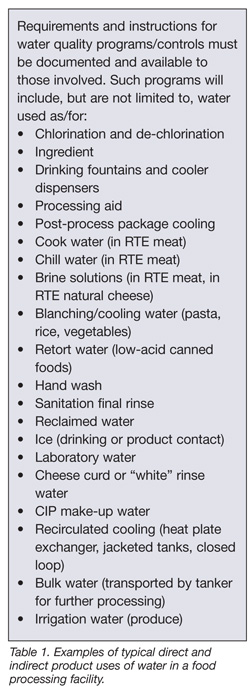 Again, whether the facility is receiving its water supply from a municipality or from private wells, the minimum requirement for incoming water is that it has been treated with an approved disinfection process. This applies to all applications and within all plant processing areas, as well, including both direct product use such as water used as an ingredient, as plant drinking water or for sanitation of equipment, or indirect processing uses such as for handwashing or recirculating cooling water (Table 1). Approved disinfection methods for water include chlorination, ozonation, and ultraviolet (UV) light, biocides and others, depending on the type and sensitivity(ies) of the product(s) that you are manufacturing.
Again, whether the facility is receiving its water supply from a municipality or from private wells, the minimum requirement for incoming water is that it has been treated with an approved disinfection process. This applies to all applications and within all plant processing areas, as well, including both direct product use such as water used as an ingredient, as plant drinking water or for sanitation of equipment, or indirect processing uses such as for handwashing or recirculating cooling water (Table 1). Approved disinfection methods for water include chlorination, ozonation, and ultraviolet (UV) light, biocides and others, depending on the type and sensitivity(ies) of the product(s) that you are manufacturing.
It should be noted that there are a few circumstances that warrant exception to the disinfection requirement. The requirement can be waived, for instance, if there is a documented history of microbiological quality compliance of the incoming water supply, supported by increased, intensive, ongoing testing. The disinfection mandate may also be waived for products and processes that are not tolerant to chlorine or other disinfection treatments, such as vinegar generation or ready-to-drink (RTD) beverages.
There are several requirements for incoming water that food manufacturers should also include the following general control and verification measures in the water safety plan:
• Require backflow preventers on each potable water line used for production and drinking as a control measure for all incoming water.
• Require ozone/oxygen generator or chlorine dioxide systems for plant well sources that pose a potential risk of containing protozoan pathogens.
• Verify the incoming municipal or plant well water system for disinfection by chlorine, ozonation, or other treatment methods and perform verification activities at a set frequency schedule to demonstrate control.
• Chlorine testing requirements and sampling plans for verification must address the following criteria:
1. Chlorination levels for plant and/or incoming treated systems must be specified, monitored and recorded. Ideally, municipal water inlet(s) and plant well water storage tanks or plant inlets are tested for free (residual) chlorine at parts per million (ppm) level (0.1 ppm – 4.0 ppm) during production. Test for total chlorine (minimum 0.2 ppm) if the municipality treats the water supply with chloramines instead of chlorine. Checking chlorine levels is also important since it is possible that the manufacturing plant is at the end of a given water distribution chain, which may mean that the incoming water has free residual chlorine levels lower than the required 0.1 ppm.
2. Municipal chlorinated water sampling and verification testing should be conducted daily until documented historical test data may be used to justify reduced frequencies. Multiple plant inlet locations can be rotated throughout the week. Further point-of-use sample locations throughout the plant are optional.
3. Well water chlorinated water sampling and testing should be conducted on a routine basis (e.g., daily). Chlorine concentration shall be properly maintained, monitored, verified and documented.
• Bromate and halogenated compounds should be tested for ozone and chlorine dioxide treated well water and ozonated bottled water on a quarterly basis.
• Ozone related water sampling practices should address the following criteria:
1. Ozone treated water at the plant shall be sampled and tested after de-ozonation to verify that you’re getting the correct control measure of residual ozone. Sample de-ozonation of equipment at each shift of production. Further sampling locations throughout the plant are optional.
2. Ozone concentrations shall be properly maintained, monitored and verified during production with an on-line meter and documented.
3. Bulk water shipments (spring well source) receiving ozone or chlorine treatment (externally) shall be accompanied by a certificate of analysis (COA) indicating concentration of the disinfectant residual (if required by local state agency having jurisdiction) at the time of loading and unloading. The receiving plant shall verify compliance.
4. If ozonation is used as an equipment sanitizer it should be sampled at the end of the sanitization circuit and recorded per documentation requirements. With its short half-life and very rapid dissipation, ozonation requires you look at equipment to make sure that the residual effects are going to be high enough to achieve the proper and expected disinfection results.
• Other modes of disinfection (UV, ozone) of incoming water and produce wash water systems (chlorine dioxide, peroxyacetic acid, hydrogen peroxide, etc.) shall be properly maintained, and system functionality verified during production and documented.
• Overall water chemistry should be monitored to establish and verify control of microbiological hazards. In particular, total dissolved solids (TDS) and water hardness are important measures of water quality. For example, water hardness may spike seasonally due to regional droughts or runoff, and for plants using UV light to control microbial load, this change can create a film that can cause the UV light to be coated with microorganisms. Instituting routine monitoring of water hardness will reveal these problematic spikes and help you to establish the correct standards and maintenance for particular types of equipment to prevent microbiological problems from developing unbeknownst to you.
• Equipment to control physical hazards present in the incoming water supply that may not have been captured at the water treatment plant should be utilized. High levels of particulate contamination can wreak havoc on machinery used to process water, such as sand or stone that might come from the municipal water, making the use of physical filtration meshes (e.g., 200-mesh filter) critical to ensuring particulate removal.
• Where turbidity testing is a specified requirement (typically for surface or well water sources), a visual assessment of turbidity shall be carried out on a routine basis. The testing frequency, and justification for any reduced testing level, must be documented. Testing shall be carried out following any event which may adversely impact turbidity, such as abnormally heavy rainfall and/or flooding.
• Establish and audit a well water disinfection requirement for contract manufacturers and sensitive ingredient suppliers. Make sure that you have a supplier quality audit program that incorporates the same type of water quality policy or program that you use internally and ensure that this protocol is part of the HACCP plan, For example, if your beverage plant is receiving liquid fructose, the supplier should have water listed as an ingredient in its own company HACCP plan, including any identified hazards and corrective actions, if warranted. By extending your guidelines and standards to a certain extent into your supply chain you will gain additional assurance that water-based ingredients or raw materials that have come into contact with water have not been compromised by sources outside of your plant before entering your manufacturing facility, which could adversely impact the effectiveness of your disinfection treatments or controls.
In addition, establishing and maintaining an auditing program covering the set microbiological, chemical and disinfection requirements for contract or well water suppliers will result in an audit trail that is useful in verifying that your plant’s specifications are met, which reduces potential added expenditures in time and labor rechecking the quality of the water or ingredient you’ve received.
Water Utilities Control
Control of the water utilities within the processing plant is another important component of an effective water safety plan. Some of the requirements that must be included are:
• When the plant utilizes and treats wells for its water source, check the plant chlorination system to ensure that proper controls are in place. Items to be checked include level probes, retention time, pumps, and piping.
• The plant water systems within the facility must be periodically reviewed and checked whenever work is performed on the system to ensure no cross-connections exist between treated and untreated supplies. This applies to all incoming water, whether it is plant-treated or municipal-treated. As a best practice, it is important to develop updated piping diagrams and labeling showing which pipes handle potable and nonpotable water sources within the plant facility. This prevents inadvertent use of nonpotable water for cleaning equipment or as drinking water.
• Ozone sensors/alarms, UV bulbs and charcoal filtration systems shall be inspected and maintained. In cases in which there is no disinfection system in the plant, such systems play important roles as water utilities controls, which have to be inspected and maintained. For example, a plant using a charcoal filtration system to remove the chlorination when producing a beverage will change filters on a routine basis. The filters should be closely monitored for microbiological load before and after the filter is changed.
There are other types of water besides direct use water within a food manufacturing facility that require control measures. There may be cooling water that is used indirectly to cool jacketed tanks, and so on, which also has to be microbiologically maintained. A recirculated cooling water system may require a biocide and/or sanitizer treatment to the system. Water that is used for other purposes, such as reclaimed water for dairy products which is not potable water, must follow more specific requirements such as the Pasteurized Milk Ordinance (PMO) requirement. In dairy plants, a prevalent use of reclaimed water is for pre-rinse in clean-in-place (CIP) applications, so another type of utility control of this indirect water is needed. The same holds for steam that is delivered into the plant; it must be of the correct quality and purity for its intended use, such as a culinary or non-culinary steam.
In the Plant: Microbiological Sampling and Testing
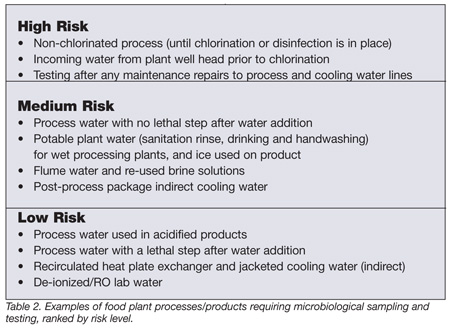 Developing a program of risk-based microbiological testing for water used in the food processing facility is imperative to ensure that your operation applies the proper and verifiable control measures at the product and process critical control points. In addition to the microbiological testing of incoming water described above, water used at various points in the process—ingredient, indirect or direct product water cooling, equipment sanitation rinse, drinking water, etc.—will also be specified in the water safety and quality plan requirements. These microbiological testing programs should be evaluated and modified as necessary based on the historical data and product/process risk conditions as identified in the HACCP plan. Table 2 lists examples of primary uses of water in a food plant by risk rankings that might be identified as a result of conducting a microbiologcal risk assessment.
Developing a program of risk-based microbiological testing for water used in the food processing facility is imperative to ensure that your operation applies the proper and verifiable control measures at the product and process critical control points. In addition to the microbiological testing of incoming water described above, water used at various points in the process—ingredient, indirect or direct product water cooling, equipment sanitation rinse, drinking water, etc.—will also be specified in the water safety and quality plan requirements. These microbiological testing programs should be evaluated and modified as necessary based on the historical data and product/process risk conditions as identified in the HACCP plan. Table 2 lists examples of primary uses of water in a food plant by risk rankings that might be identified as a result of conducting a microbiologcal risk assessment.
Water testing plans for specific products/ingredients must be defined and documented, and must indicate the following: sample location and size; chlorine and/or ozone sampling and testing (well and municipal water) as described; test frequency; required test(s) and test methodology; acceptance criteria; unacceptable results and retesting; corrective action criteria; and records.
Water sampling for microbiological testing. Water sampling practices shall address the following criteria:
1. Sampling will be at a point of use (e.g., site closest to point of entry from source and site within processing areas).
2. Sampling site shall be rotated.
3. Water shall run 2 to 3 minutes before sampling.
4. Well water sample valves and/or sample ports shall be alcohol sanitized followed by water flushing for a minimum of 30 seconds before sampling.
5. Chlorinated water samples will be treated with sodium thiosulfate to neutralize the chlorine.
6. Testing must be completed within one hour of sampling or the samples must be refrigerated and held no longer than 24 hours.
Basic test requirements. All plant microbiological testing can be conducted using two indicator organism tests, aerobic plate and coliform counts, which predict the microbial load of the water and enable the plant to establish corrective actions based on action levels contained in the EPA Safe Drinking Water Act. To comply with EPA water standards for potable water, the action level for APC is <500 per 1 mL and the action level for coliform testing is <1 mL absence/presence per 100 mL. It is important that you pull 125-mL samples for both APC and coliform testing to ensure that you have the 100 mL required to conduct the coliform test. As mentioned above in the sampling criteria, it is important that you use a water sampling kit that contains a sodium trisulfate tablet that neutralizes the chlorine to ensure accurate test results. These indicator tests will also detect the potential presence of generic E. coli and E. coli O157:H7 in cases where a well water source supplies the plant.
Some microbiological testing programs concentrate not just on coliform aerobic plate counts, but also look at heterotrophic plate counts (HPC using Standard Methods Agar), which are useful in identifying areas in the plant’s water system susceptible to the development of biofilms. HPC, formerly known as the standard plate count, is a procedure for estimating the number of live heterotrophic bacteria in water. This test can provide useful information about water quality and supporting data on the significance of coliform test results. High concentrations of the general bacterial population may hinder the recovery of coliforms.
Test methods. There are many screening and detection test kits commercially available to food processors that work well for water testing applications. Free and total chlorine testing can be conducted with a colorimeter or photometer (using EPA approved methods) with a detection limit to 0.05 ppm level for chlorine. Several test kit manufacturers offer easy-to-use APC and coliform enumerative methods based on a variety of techniques recognized by AOAC International, including film-based, defined substrate technology, binary detection technology, chromogenic media, immunoassay, colorimetry, immunomagnetic beads, as well as automated plating, immunoassay and molecular detection systems.
Frequency. The frequency at which sampling and testing for either pathogen or spoilage risk should occur is based on product/process sensitivity to microbiological contamination and determined by the appropriate quality and microbiological or food safety functions. Another factor to consider when determining testing frequencies is the number of water sites in the plant. Due to a large number of point of use sites within a given facility, your time is well spent in mapping out the important areas where the most testing is warranted as indicated by historical data or through risk assessment to determine a frequency that makes sense for each site.
When considering the types of risk-based microbiological water testing you should factor in the sensitivity of the product and whether the water is used in a product processed with or without a lethal kill step. For example, in cases where product is made without a lethal kill step, the plant will want to consider more frequent monitoring (e.g., weekly) to ensure that alternative control measures are working adequately. A similar testing program can also be implemented for any product to which you are applying water after the kill step, such as chill water used on meat after it goes through the smokehouse, water used to chill down filled beverages, or ice that is used for fresh cheeses. A less frequent monitoring program (e.g., monthly) might be advisable for product that is processed with a kill step or for acidified products like salad dressings in which the formulation itself, the acid in the product, provides a kill step.
Testing frequencies will typically range from daily or weekly, to monthly and quarterly schedules based on variables such as the water source, type of disinfection treatment used, and the product/process risk factors.
Unacceptable results, retesting and corrective actions. What do you do when microbiological levels are exceeded? In all cases of unacceptable microbiological test results, prompt corrective action steps must be taken and appropriate communications should occur. Affected water will need to be retested at the original and additional sites, including point of entry to the plant at an increased frequency, for determination of possible source of contamination. Retested water sites with coliform results should be communicated to the plant quality, engineering, and applicable management staff.
Coliform results from the plant well and/or in-plant sites taken for regulatory purposes also must be reported, Specifically, noncompliance of specific SDWA quarterly sampling and testing (coliforms) performed by an outside certified lab must be reported to the appropriate state agency within 48 hours.
If test results exceed the acceptance criteria limits and continue to occur beyond one month, the company will then determine the appropriate action steps. Depending on the results of any investigation into the source of non-standard micriobiological results, the following corrective actions should be taken:
• Check the chlorination system (level, retention time, indicating probe, pump/piping, etc.), as applicable. Re-check samples for free chlorine level at specified sampling locations. Re-view test methodology used. If free chlorine levels (<0.1 mg/L) continue, the municipality shall be contacted to review chlorine test verification programs. Contact the municipality if ther the levels are > 3.0 – 4.0 ppm.
• Water lines shall be traced for potential sources of contamination and/or biofilm formation. These would include: water inlet, filters, softening equipment, back flow preventers, dead end piping, recent plumbing changes, “shock absorbers”, etc. The water lines shall be checked, steam cleaned, chlorinated, and sections replaced as applicable. Well water line leaks can be tested by an outside contractor.
• Water lines, hoses and nozzles, faucets, etc., will be checked, repaired, cleaned and chlorinated, as applicable.
• Recirculated cooling water circuits and exchange water will be checked, cleaned, exchange water, and if necessary initiate chlorination.
• Plant well water inlet shall be tested three additional times within a one week period. If any out of standard results are reported, next steps shall include “shock treating” with chlorine. Indirect cooling water system biocide and/or sanitizer treatment will be checked and treated with FDA approved biocide treatments, as applicable.
• Corrective action steps shall be documented.
In the Plant: Chemical Contaminant Testing
Like microbiological testing for water quality, a testing program for chemical contaminants can be predicated on a risk assessment approach and should be included as part of the food manufacturing facility’s HACCP plan. Establishing a chemical water standard for your plant begins with following the compliance requirements of the EPA SWDA standard, which lists the various waterborne chemical contaminants and metals of concern to food manufacturers. Regulated chemicals should be placed on a testing frequency based on your operation’s knowledge of known or likely contaminants that could enter or flow through the plant’s water supply. Depending on the chemical concentrations found, the plant may want to institute routine water sampling and analyses more often than required by the national safe drinking water standards.
Because there are many chemicals, both regulated and unregulated, that can adversely impact your operation’s water quality, testing for these analytes needs to be based on historical data for both your water supplier and your particular facility. For example, perchlorates and methyl-tri-butyl-ether (MTBE), both fuel additives, have caused extensive chemical particulate contamination in water aquifers nationwide, becoming a concern for all food manufacturers using water. Even so, testing is not required for these chemicals, and a processing plant would include additional testing for these analytes in the water quality plan only if local concerns exist. The total trihalomethanes (TTHMs) family, which includes chloroform and other chemicals formed in the water disinfection treatment process, is another group of potential contaminants found in water that can negatively affect food quality.
Another potential issue of concern is detectable traces of chemicals in the water supply that are allowable, but that when blended together through application may form another chemical that is not regulated. This might cause blips on your chemical assay but will be difficult to identify, much less to adequately monitor or test to determine whether it poses a hazard to your product.
Make sure that the sanitation chemicals and disinfection agents used in the plant are compliant with standards applicable for use around food products. A supplier may have reformulated cleaning products and these could contain new and unexpected chemicals components that are unacceptable for use around your food products.
Beyond chemicals, some plants may want to consider testing for heavy metals in the product/process water supply, particularly if there are any leaded water distribution lines leading into the plant. Heavy metal contaminants can affect the product quality, both in reduced flavor profiles and shelf life.
Test methods. Testing total dissolved solids (TDS) and water hardness are fundamental water tests that should be conducted on a daily basis. These measurements help determine whether the water coursing through your processing lines is acting as a solvent. The mechanical action of water on pipes, for example, can break down piping and other water conveying equipment. Knowing your water chemistry will give you a good idea of whether you have water that is stable or more aggressive. The measurement of pH is another important test that can be used to verify water disinfection, as
Critical Flow: Planning for Water Safety & Quality
